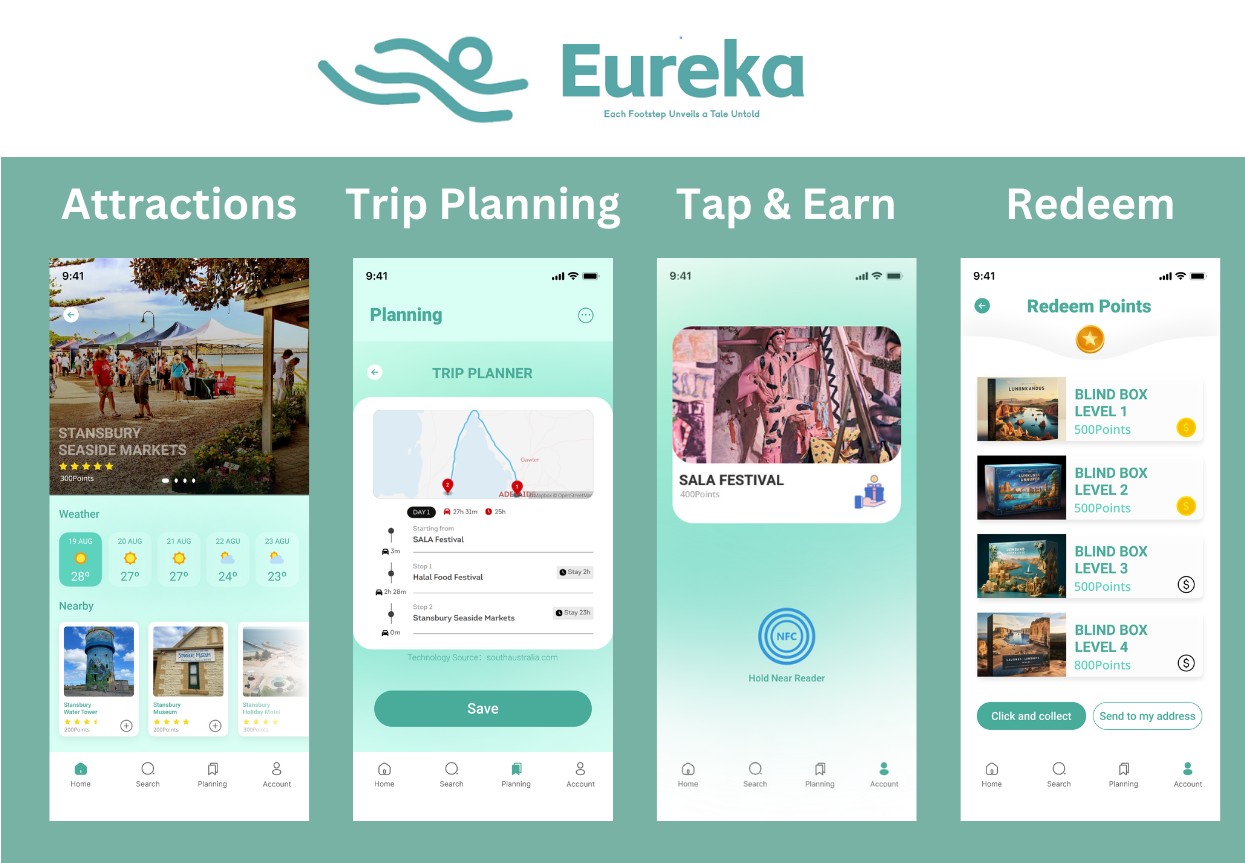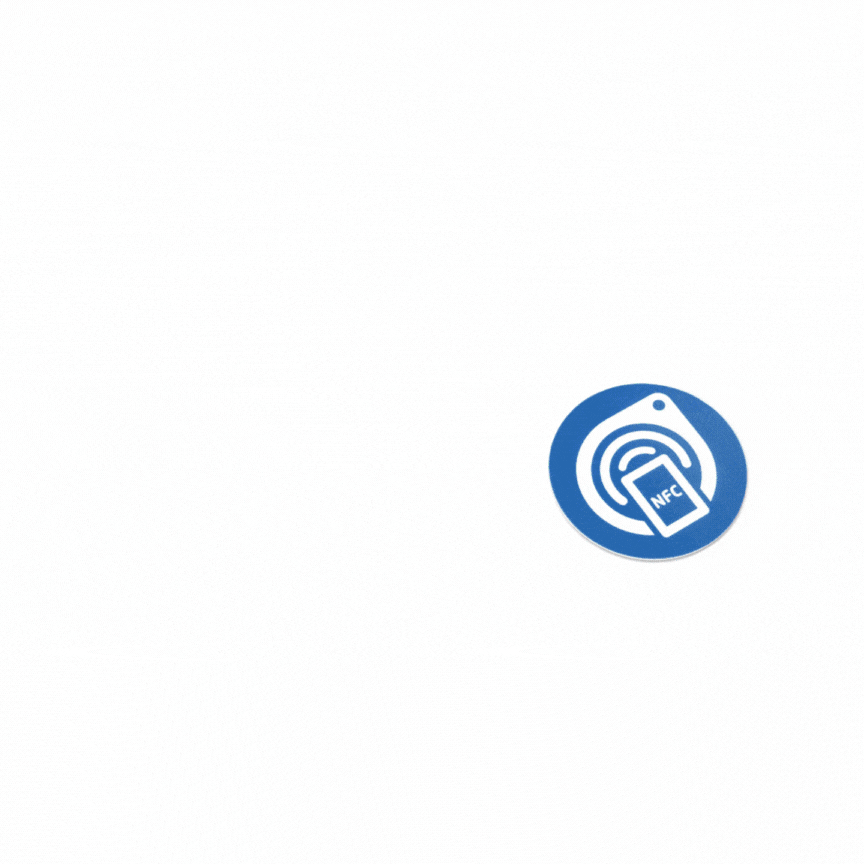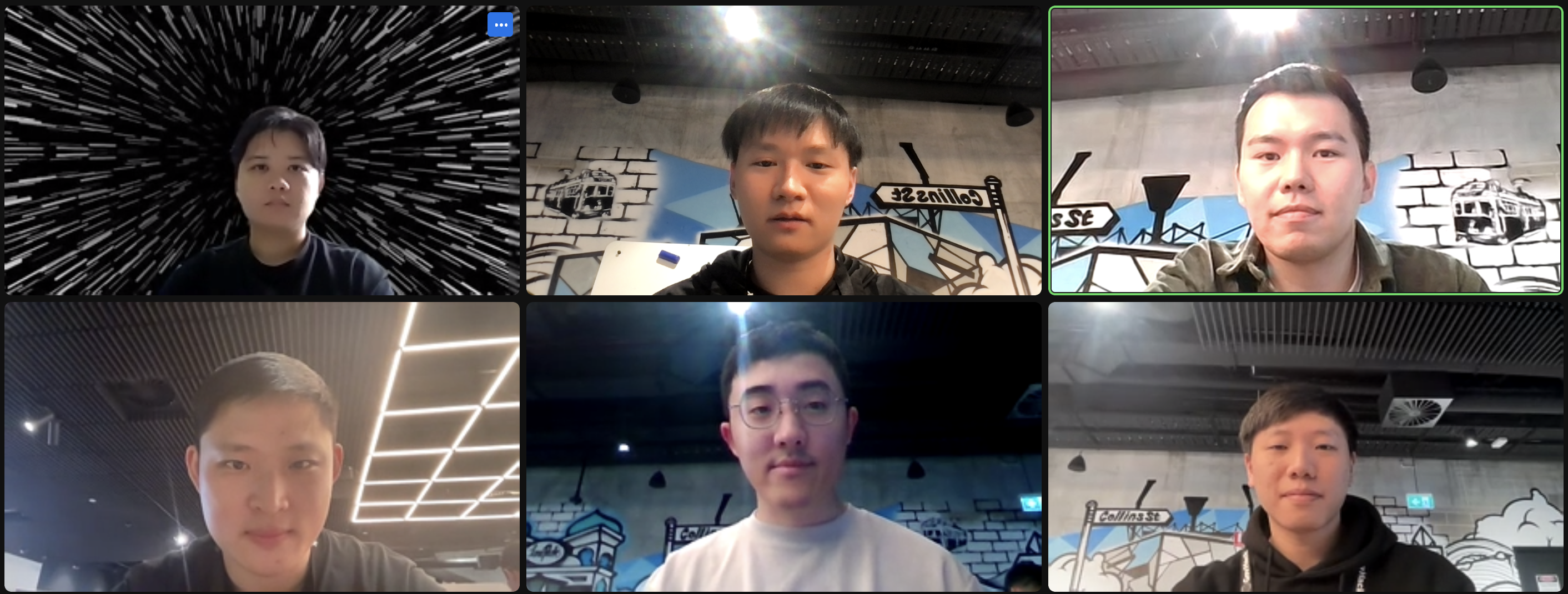Project Description
Eureka
The Eureka app leverages mobile, IoT, and NFC technology to enhance the tourism experience in South Australia, encouraging visitors to explore more venues and extend their stay. By scanning receipts from participating local businesses or tapping on outdoor IoT devices at attraction venues, users can accumulate points. Once a certain point threshold is reached, these points can be redeemed for meaningful souvenirs. Additionally, the Eureka app offers a comprehensive suite of support features for travelers, including an itinerary planner, weather and emergency alerts, and recommendations for nearby hotspots and attractions. In this way, users can better engage in the tour with the support of digital tools, creating a seamless and enriched travel experience.
Quick Glance

Overall Subsystem Design

The above diagram describe the main components of the backend system.
Front-end: Mobile App




Point System[Core]
This sequence diagram illustrates the process by which users can scan receipts to accumulate points.

Cloud Solution Design
The following diagram provides a preliminary design for constructing a cloud-native backend system.

User Story
Ben is a father of 2 daughters from Victoria, visiting South Australia for his 4-day Christmas holidays.
Having never been to SA before and possessing little knowledge of local attractions, he came across Eureka posters at Adelaide airport. The adorable and meaningful collectibles fascinated him, and he thought these would be perfect souvenirs for his daughters. Consequently, he opted to download the Eureka app to accumulate points and explore South Australia.
As a first-time visitor, he swiftly located recent festival events and places of interest within the app. He also gained insight into unfavorable outdoor days through the weather forecasts. Employing the Eureka trip planner, he effortlessly added destinations and pinpointed nearby shops and restaurants for NFC tapping and points collection.
However, he realized that his points fell short of redeeming gifts for both daughters. Therefore, he decided to extend his stay by another day, spending time at nearby shops to collect more points.
Team

Data Story
Tourism has always been a key economic driver for South Australia. The SA government has expended significant effort to boost its tourism sector, setting an ambitious goal of reaching $5.1 billion by 2030. Nevertheless, this lofty goal currently faces challenges within the context of prevailing urban travel, including increased visitation from the Eastern Hemisphere and shorter lengths of stay. While some data-driven services have been developed to assist visitors in planning their journeys and discovering attractions, there remains a need for a centralized tool that is user-friendly and strategically encourages visitors to increase their expenditures.
Our team recognizes the following data resources and challenges:
- Trip Planner itineraries: This contains data about SA attractions and serves as a well-established tool for trip planning in South Australia. However, it requires further promotion as users lack motivation to utilize it.
- Open datasets and APIs on BOM, RSS, SES, and Google Maps: These contain useful information, including weather updates, emergency services, food options, and entertainment choices. However, they remain isolated and are not integrated with the trip planner.
- Lack of user interactions and incentives for usage.
- Insufficient emphasis on boosting local businesses.
Hence, our team aims to build an app solution that integrates existing data and services with enhanced features for recommendations and exploration. However, a question remains: how can we encourage more users to utilize it and amplify its impact? By implementing a point-based tap-and-collect system, we intend to infuse our application with distinctive collectibles, thereby disseminating its influence across social media platforms and motivating users to visit local stores, and therefore, boosting travel expenditures.










